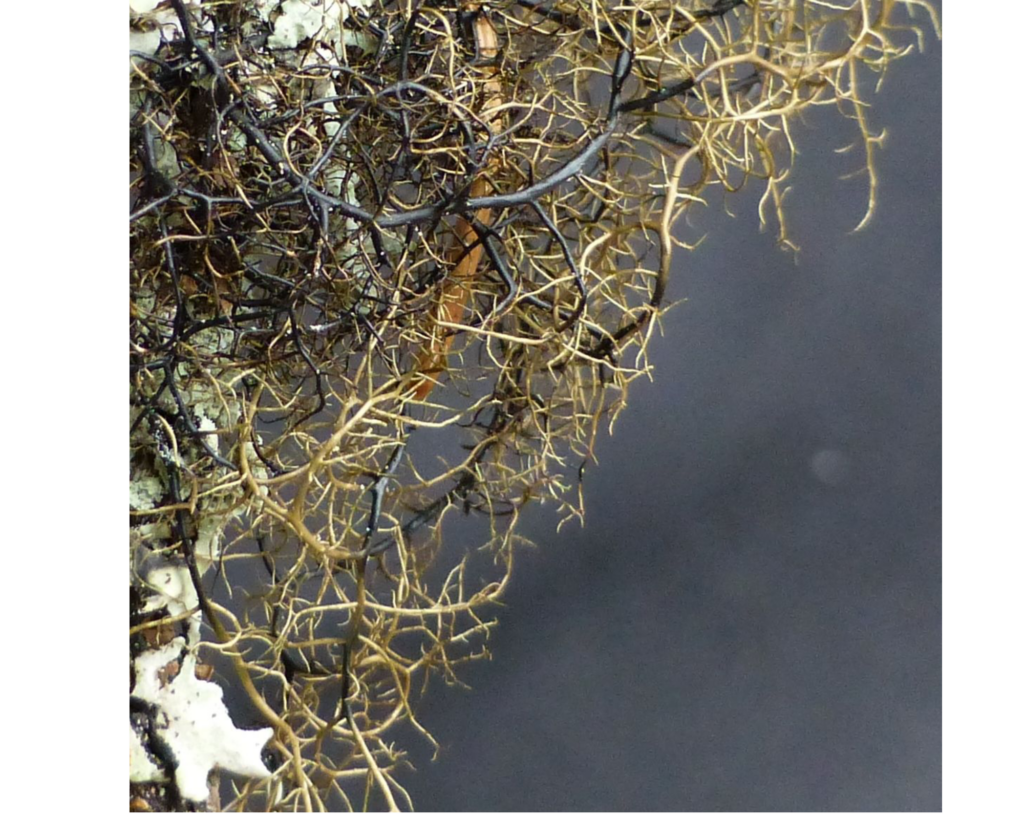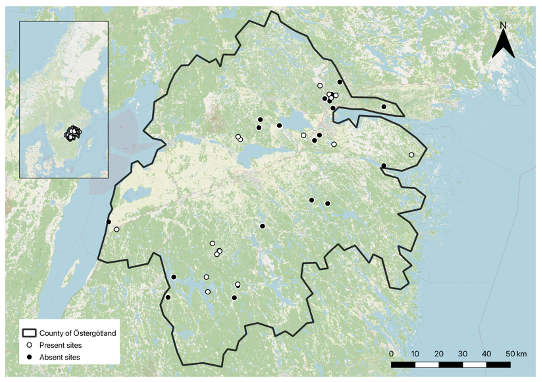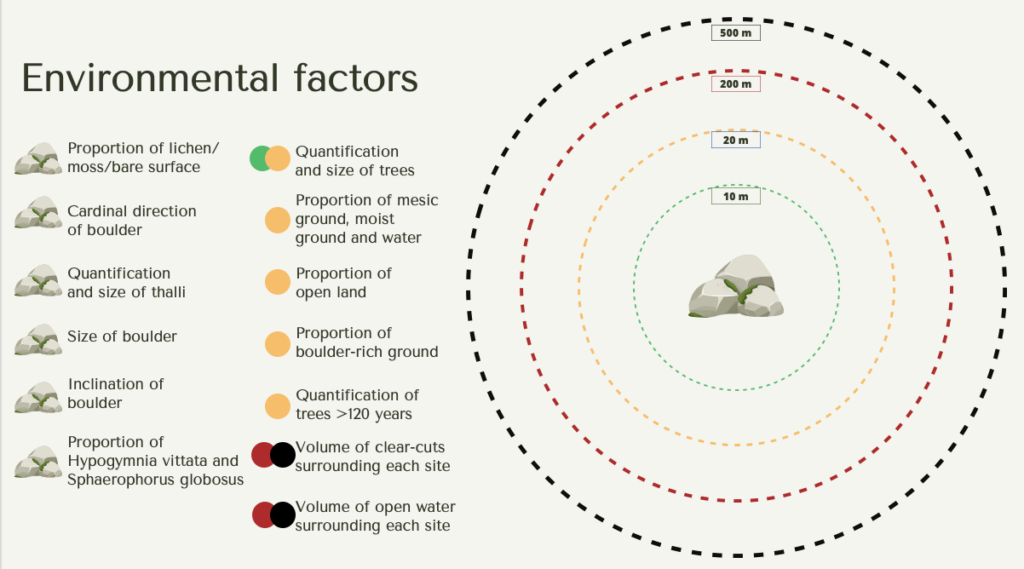
Study species
Bryoria bicolor is classified as Endangered on the Swedish Red List, due to its strong decline since 1960s. It is a suboceanic lichen with a worldwide distribution area which covers mountain areas in Europe, coastal areas in North America, as well as Africa, Japan and the Himalayas. The lichen is mainly found on vertical surfaces, rock walls or boulder, usually surrounded by conifer forest. B. bicolor is also sensitive to changes in the environment and require high humidity in forests with long continuity.

Study area
The field survey was conducted in the county of Östergötland, in southeast of Sweden. All previously observed locations of Bryoria bicolor from the last 25 years were identified using data from Artportalen. All sites were revisited and the status of the species were evaluated at each site. I visited 37 sites and made a total of 45 separate inventories.

Data collection
Several different variables describing the lichen and its surrounding habitat were collected during field work. I did measurements either on the boulder where the lichen was growing, within 10 metres, 20 metres, 200 metres or 500 metres from the boulder.
| Environmental factors | Description |
| Proportion of lichen/moss/bare surface | The proportion (%) of lichen, moss and bare surface on the boulder was measured. They were estimated within 30 cm of the growth spot, using a 30 cm circle. If there were five or more Bryoria bicolor thalli present, only five different measurements were collected. These five thalli were chosen randomly. |
| Cardinal direction of boulder | Cardinal direction of the boulder where Bryoria bicolor had been reported was collected with a compass. |
| Quantification of size and thalli | The number of thalli of Bryoria bicolor was counted. The growth area and height were measured, using a measuring tape. The height of the lichen were then divided into three different categories; 0-1.5 cm, >1.5-3 cm and >3 cm. |
| Size of boulder | The area of the boulder was measured using a measuring tape and estimation. |
| Inclination of boulder | The inclination, at which the lichen is growing on, was measured with a protractor, which was 40-cm long. |
| Proportion of Hypogymnia vittata and Sphaerophorus globosus | The proportion (%) of two indicator species; Hypogymnia vittata and Sphaerophorus globosus was measured. The proportions were collected within 30 cm of the growth spot, using a 30 cm circle. If there were five or more Bryoria bicolor thalli present, only five different measurements were collected. These five thalli were chosen randomly. |
| Quantification and size of trees | Measurement of tree continuity and age was collected by counting the number of trees with different diameters within 20 metres of the lichen. The trees were divided into three different classes; 0-10 cm, >10-30 cm and >30 cm in diameter and separated into either deciduous, spruce or pine trees. The exact tree diameter was measured of each tree within 10 metres of the lichen as well as type of tree. |
| Proportion of forested land and water/humidity | The proportion (%) of forested land and ground humidity within 20 metres was measured. The area was divided into five different classes; open land, boulder-rich ground, mesic ground, moist ground and water. |
| Quantification of trees > 120 years | The number of trees that were >120 years old was counted within the 20-metre-boundary. |
| Volume of clear-cuts and open water surrounding each site | Clear-cuts and open water were measured in buffer zones of 200 and 500 metres within each site and then calculating the volume (hectare) of clear-cuts and open water within the buffer zones. |

Statistical analyses
To test which variables that influenced occurrence of Bryoria bicolor, a generalised linear model (GLM) was applied using a logistic regression with a binomial distribution. The dependent or binary outcome variable was occurrence of B. bicolor, which was either present (1) or absent (0). The independent or predictor variables were variables collected in field. These were inclination, boulder size, proportion of moss, lichen and bare surface, proportion of indicator species, proportion of forested land and humidity/water, tree continuity as well as clear-cuts and water within 200 and 500 metres from each site.
Additionally, a chi-square test was used as a statistical method to determine if there was any significant association between smaller populations from previous observations and extinction from this inventory. The data from previous observations was grouped into two different categories; abundant or frugal. If five thalli or less was observed at a site, it was categorised as frugal. The number of sites with abundant or frugal thalli was tested with the number of sites where the lichen had gone extinct or if it had been rediscovered.